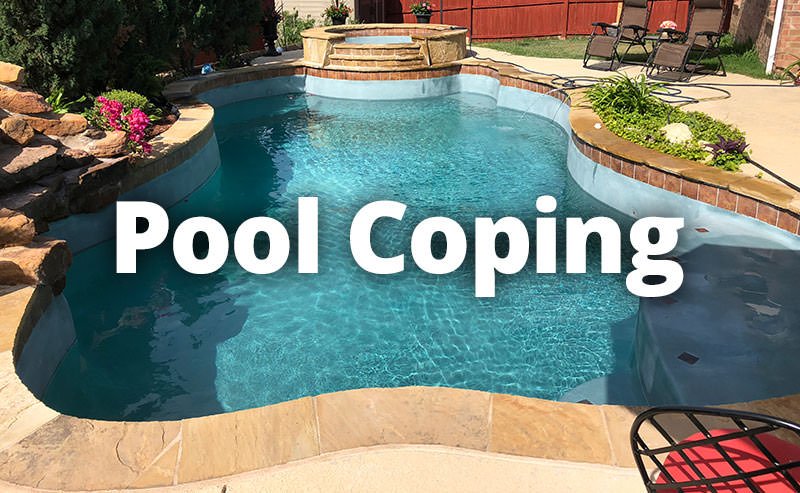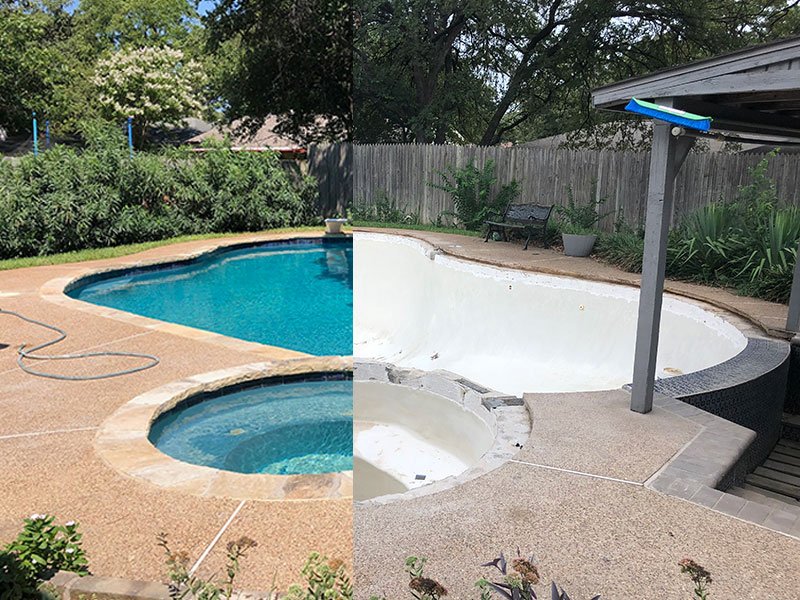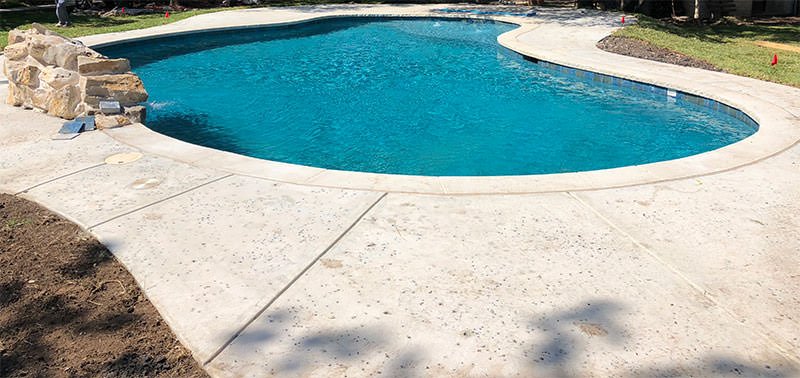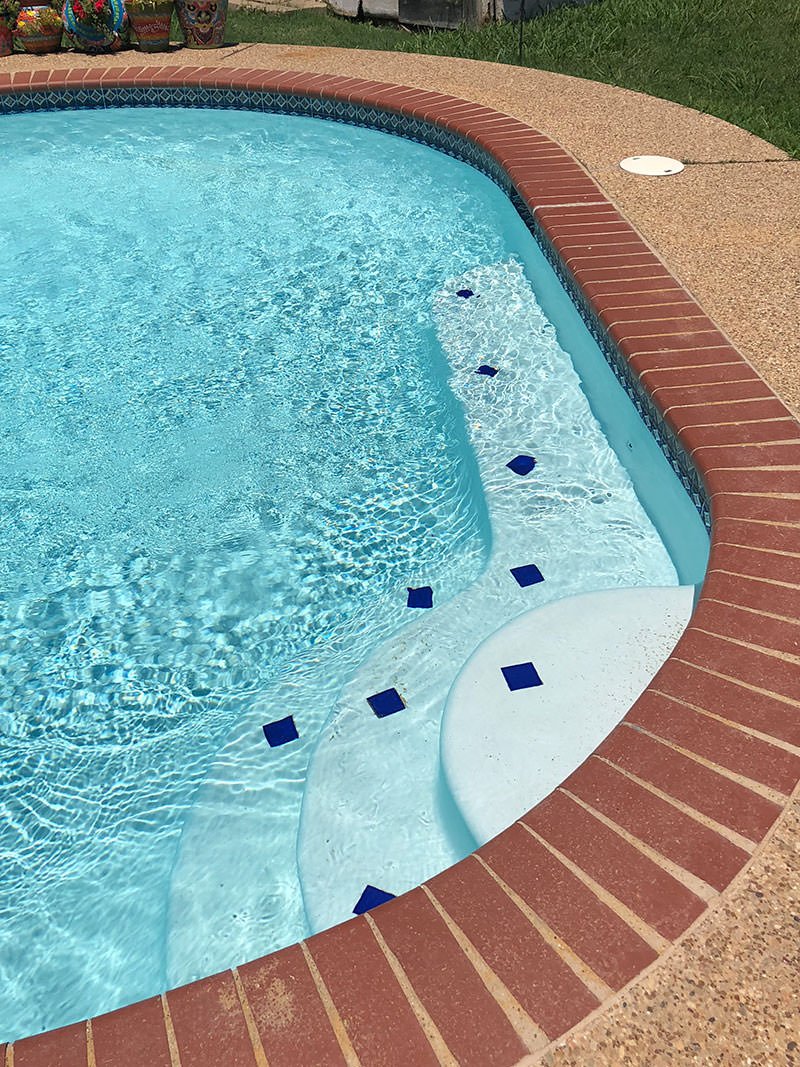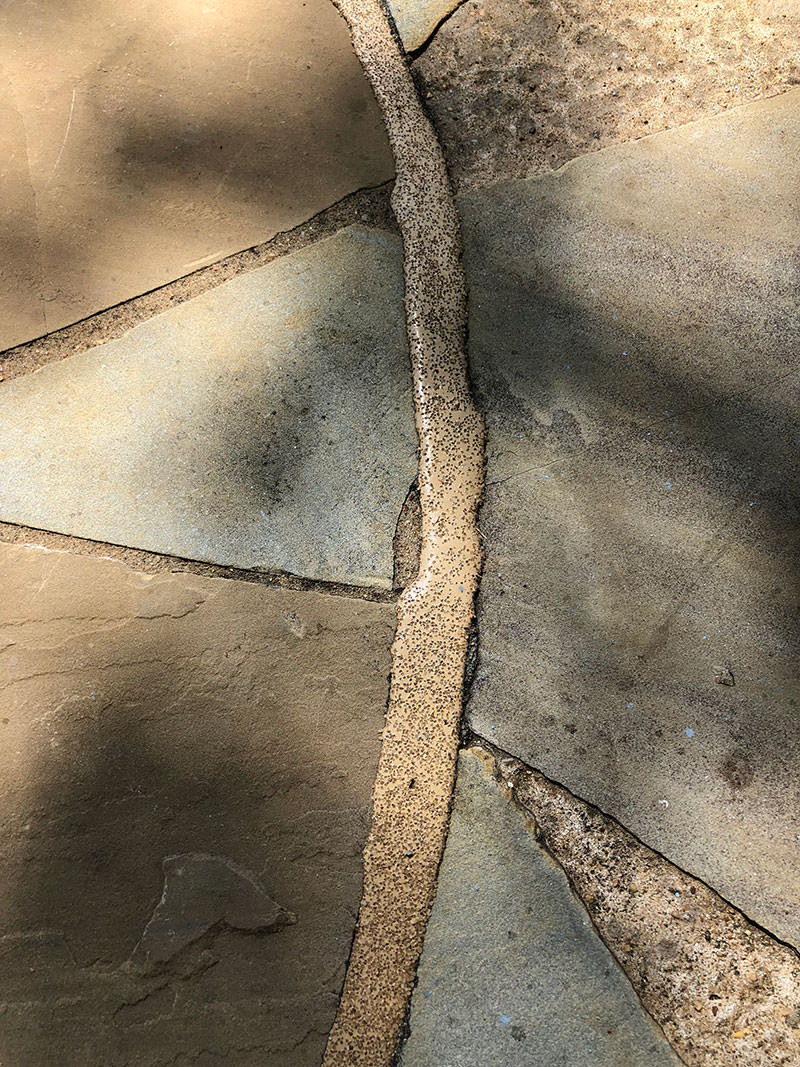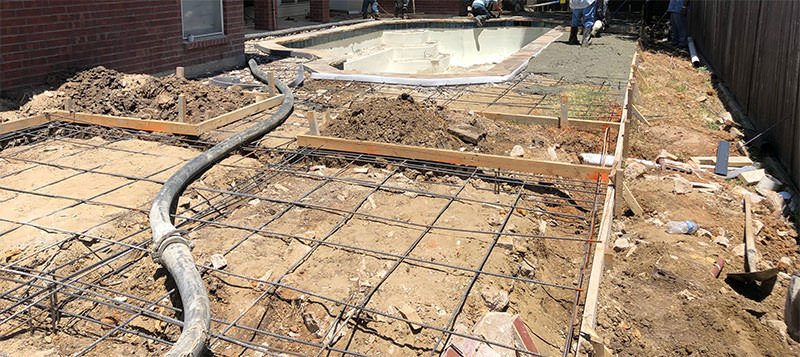As summertime approaches, the first thought on the minds of people both young and old alike is “When can I hop into the nearest pool?” No matter what your age or background everyone enjoys a refreshing dip in the water.
Traditionally, many older home pool styles had cantilever type decks that were not particularly aesthetically pleasing to the naked eye. However, new technology pool coping has become more prominent in providing better-looking backyard options with little to no hassle at all.
What is Pool Coping?
Pool coping is the manner in which the pool shell wall is capped either through poured in place concrete or pre-cast concrete materials such as tile and natural stone. When a person is hanging onto the edge of the pool and placing their arm on edge, the coping is the part of the pool they are hanging onto.
The pool coping is the material above the tile line that protects the top of the pool edging. This part of the pool is about twelve inches tall, also known as the bond beam. The coping separates the pool structure and the pool decking. Coping also has another use in which it acts as a frame around the pool.
By separating the deck from the pool, the deck can be moved without affecting the pool itself.
Coping involves mounting onto the bond beam, and it covers the edges while stealthily hiding the steel portions of the pool’s walls. Coping also assists the drainage system by making any water flow away from the pool and into the deck drains. Materials such as flagstone, brick, or synthetic decking can be used for coping pools.
Another use for coping is providing a safe, non-skid surface so that swimmers do not fall onto the concrete or into the water. Pool coping also creates a seamless look that is aesthetically pleasing if performed properly.
Pool Coping Materials
When it comes to pool coping, there are several different types of materials that you may choose from. People tend to remodel older pools to replace the pool coping with newer, longer lasting materials. Each of the different types of coping materials has its distinct advantages as well as nuances. Plenty of research should be performed before deciding which one suits you best.
The following are common pool coping materials that are used:
- Concrete
- Pavers
- Natural Stones (e.g. fieldstone, limestone, granite,etc.)
- Brick
Concrete
Concrete is the most commonly used pool coping material that has been the preferred choice for several decades. This timeless appearance provides a smooth transition between the pool deck and the coping itself. If your main goal is to give the pool a cleaner appearance without a break in the finish, concrete is the preferred option.
Concrete also makes the pool look larger and can be less expensive than other options if the precast concrete option is chosen.
Pros:
- Concrete is easier to clean and maintain
- Easy to walk on barefoot
- Doesn’t get overly warm in high temperatures
Cons:
- Can be slippery depending upon the type of finish
- Looks less visually pleasing than other more modern options
Concrete Pavers
Concrete pavers are another option that is popular and readily available. The benefit to concrete pavers, as opposed to traditional concrete, is that they are less likely to crack than a solid slab of concrete.
Pros:
- Since they are individual pieces, they may be replaced much easier than having to rip up an entire slab of concrete.
- Less likely to crack
Cons:
- More expensive than traditional concrete slabs
Natural Stones
Natural stone is a more expensive option, but the look alone can be well worth the price if it is within your budget. Different types of natural stones include fieldstone, limestone, and granite. Another natural stone that may be used is travertine because it is more heat resistant and also provides protection from slippage.
Pros:
- Aesthetically pleasing
- Many people prefer the finish
- Less slippage
Cons:
- Can be much more expensive than other options
- Replacement can be a hassle matching the materials
Brick
Brick is an aesthetic option that fits well alongside outdoor patios and outdoor living areas. The price of brick can fluctuate substantially depending upon the type and variety. Choosing one that is within your budget is perfectly within reason.
Pros:
- Brick is easy to walk on
- Costs less than natural stones
Cons:
- Brick can be cracked easier
- More expensive than concrete
Choosing the best pool coping material will vary tremendously based upon individual needs, budget, and unique tastes. There is no one size fits all for each and every pool. Perform plenty of research and review all options available before coming to an overall consensus.
Pool Mastic or Coping Caulk
In-ground concrete pools that are made of brick or other natural stones will have an expansion joint that is called mastic. The purpose of the expansion joint is to allow the pool and pool deck to expand when the weather is warmer. The expansion joint allows the pool deck and pool wall to expand in the heat without touching one another.
The deck can expand up to one-quarter of an inch, and expansion joints should be filled with caulk. The joint should be caulked roughly every five years. If it is not caulked, it will become filled with sand and other debris eventually causing tremendous amounts of damage to the natural stone materials. The most important attribute about caulking is preventing water damage and leaking.
In the long run, the simple method of caulking can help you save thousands of dollars in replacement costs later on down the line.
If you plan on pool caulking yourself some common tips to follow include:
- Clear the area and ensure that no pets or children are in the immediate area for at least 24 hours
- Keep rags and cardboard around the pool
- Clear the deck of any debris or materials that could get caught in the caulk itself
- Perform the caulking in 40-80 degree temperatures so that it is neither too warm nor too cold to affect the caulking setting in
- Ensure the forecast does not call for any in-climate weather including rain, sleet, or snow
Not all pools will require caulking but depending upon the material types it is well worth it for the life of your pool.
The pool mastic is a putty-like material that expands and contracts depending upon the weather type. It will expand slightly in warmer temperatures while contracted in times in which the weather is colder. Either way, it will aid in preventing leaks from occurring preventing further damage to the pool coping and deck.
If you have any further questions or need help replacing your pool mastic, contact our team.
Pool Coping Replacement
There are several signs that pool coping may need to be replaced. One of the most common signs of needing replacement is cracks throughout the decking. No matter the material used in the decking, if cracking starts to become commonplace that is a surefire sign that the pool coping and mastic needs to be replaced.
The purpose of the caulk is to allow the pool decking to expand and contract depending upon the specific weather types. As the caulk wears out, there is no space for the decking to contract. As a result, cracking will become commonplace and occur more frequently.
This could lead to larger cracks in your pool, which can turn into major issues.
Another potential sign of a pool needing coping replacement is that pool tiles begin to break. The glue can potentially break and can contract so frequently that eventually the materials it bonds to begin to break. If the damage to the pool coping itself has not been too substantial, simply replacing the caulk and not the deck itself may be sufficient.
Another sign that it’s time to redo the pool coping is that the deck rises higher compared to the level on the top of the pool. Also known as deck heaving, sudden changes in weather or temperatures can cause significant damage to occur to your deck.
If you begin to notice there are significant hollow spots in the concrete, it may be time to replace the concrete decking.
Depending upon the type of material, it can vary in regards to how difficult it is to replace pool coping. In the Dallas-Fort Worth area, concrete is a popular pool decking option that will not be overly susceptible to different climate changes.
Wood decking is an option that will last for a significant time but will require greater amounts of annual maintenance in the form of staining and preventative maintenance.
Natural stone type decking is the most expensive option, but the durability and overall appearance are difficult to match.
Sometimes the best option for deck replacement will be to construct an entirely new type of pool deck but still incorporate some of the previous structural elements from your original deck.
Pool Coping Grout Repair
Typically pool coping has the main purpose of joining together the horizontal deck with the vertical walls of the pool. It acts with a sense of architectural presence protecting the pool’s beam.
If water can actively penetrate the grout, it may cause the walls of the pool to shift, and as a side effect, major damage can occur to the pool.
It becomes necessary to repair brick coping when damage can visually be spotted with the naked eye. However, in cases where only the grout is damaged, simply remove the old grout. Fill the old joints with new grout in order to seal out moisture and protect the pool from any long-term damage or side effects.
Remember that if you are repairing the pool grout yourself, it sets in faster than other types of structures so be aware that it dries faster. Pool grout differs from the grout that may be used in household tiles as it has a greater degree of flexibility.
The flexibility allows for a greater range of expansion and contraction to handle all different weather climates and variations.
Although grout can be repaired in a fairly simple manner, if the damage is too severe, there is a chance that an entire pool deck may need to be remodeled.
Remodeling a pool deck is one way to improve the appearance of your backyard while also increasing the value of your home in the process.
No matter what your current backyard may look like, there are several affordable options available suited to fit your individual needs. Even if the pool is structurally sound, there may come a time when an upgrade just makes sense.
Contact Willsha Pools
Pool coping can make or break the appearance of your backyard and there are several opportunities available for making your deck look amazing. Even if your backyard currently does not have a pool, there is always time to make a new addition to your home.
Pool decking doesn’t have to be an overly expensive, ridiculously challenging chore. Simply refer to the experts with enough experience and know how to provide you with the right product at the right price.
If you reside in the Dallas-Fort Worth area and are thinking of redoing your deck or simply providing it with the right facelift, be sure to contact Willsha pools for a free quote. Our team of experts will take all the hassle out of the equation and provide you with an estimate in no time.
Stop letting everyone else have the backyard of your dreams and take the first step towards the backyard of your dreams today!

